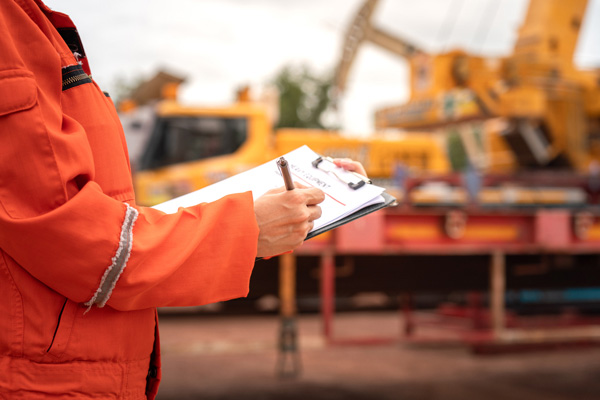Crane Inspection Training: Key to Equipment Reliability

Each time you step behind the controls of a crane, whether it’s a crawler crane, fixed cab, or swing cab, you’re taking responsibility for a powerful piece of machinery that is designed to move thousands of pounds of materials every time it operates.
A lot of people will be depending on you, including your employers, coworkers, and anyone else nearby whose safety depends on the reliability of the equipment and the skill of its operator. There’s probably a lot of money at stake in the task you’re doing too, which is why your employer is willing to compensate you so well for your work. Of course, before you take on such a massive responsibility, everyone will want to be sure you have completed crane operator training and are NCCCO certified.
Once you’ve completed the crane inspection program at West Coast Training, you’ll be able to tell your employers and colleagues not to worry: you know what to do to ensure the equipment is safe and reliable.
Inspect Your Equipment Before Each Use
Cranes are massive, complex machines that have many different moving parts. The skilled professionals who operate them have a lot to keep track of, and part of what you’ll learn during the crane operator courses at West Coast Training is what you’ll need to inspect and how to inspect it before starting any job.
You’ll learn how to write up an inspection checklist and work your way down the list, ensuring that each critical element is fully functional before beginning a job.
What’s On the Inspection Checklist?
There are many different types of cranes, each with slightly different features and uses. This means that each inspection checklist will vary a little. However, there are a few things they are all likely to have in common.
For example, you’ll begin with the basics. Is there enough fuel in the crane? What about oil and coolant? You’ll learn how to test the levels of these fluids and also how to make sure the brakes are functional.
The next step will be to check the working elements of the crane itself, including any hoists, winches, and chains. Your inspection checklist will also include any other mechanical parts, such as the swing cab and the trolley, if applicable.
Why Get Crane Inspection Training?
Cranes are used for an incredible number of different tasks. Essentially, any job that involves lifting a large amount of weight will require the use of a crane: everything from constructing skyscrapers to loading cargo onto massive freight ships to mining minerals from deep within the earth. They’re even used to construct other, larger cranes. This means that anyone who has knowledge of how to operate them will find themselves in high demand by many, many different employers.
Any prospective employers, however, will want to know that their workers will be safe, that their equipment will be well taken care of so that it remains reliable, and that any tasks they assign will be in capable, experienced hands.
At West Coast Training, you’ll not only learn how to create an inspection checklist, but you’ll also spend hours in the field, earning practical experience operating the machines you’ll be using on the job. Contact us today for more information about how to get started on this lucrative career path with crane operator training.
